Souk El Had of Agadir is the heart of the old medina, rebuilt after the earthquake of 1960. In the souk, a large number of merchants are gathered to offer customers a multitude of diverse and varied services, from computer to clothing or cosmetics to primeurs. Many crafts and traditional crafts present the most beautiful pieces of Moroccan crafts in one place.
Parc National du Souss Massa

The nature and ornithological reserve of Oued Massa is easily accessible from the N1. About 60 km south of Agadir, towards Sidi R'bat the tourist village. The road is a sandy track that leads to the reserve gate and parking. Wadi Massa is part of the Souss Massa National Park. It protects this important migratory stopover between tropical Africa and Europe. Today, he is mainly in charge of protecting the last viable population of bald ibis around the world. The park managed by the High Commission for Water and Forests and the fight against desertification, is organized. A day care center is being set up and some of the technical agents have solid naturalistic knowledge, which allows a good monitoring of bird populations. Eco-tourism tours were created and local guides were trained to acquire solid knowledge. It is then possible, in all discretion, to observe the comings and goings of the birds according to the tides and the frolics of many wild boars in the mudflats, at any time of the day. An ideal place to discover some of the fauna and flora of southern Morocco.
Spot de surf de la baie d'Agadir

The nature and ornithological reserve of Oued Massa is easily accessible from the N1. About 60 km south of Agadir, towards Sidi R'bat the tourist village. The road is a sandy track that leads to the reserve gate and parking. Wadi Massa is part of the Souss Massa National Park. It protects this important migratory stopover between tropical Africa and Europe. Today, he is mainly in charge of protecting the last viable population of bald ibis around the world. The park managed by the High Commission for Water and Forests and the fight against desertification, is organized. A day care center is being set up and some of the technical agents have solid naturalistic knowledge, which allows a good monitoring of bird populations. Eco-tourism tours were created and local guides were trained to acquire solid knowledge. It is then possible, in all discretion, to observe the comings and goings of the birds according to the tides and the frolics of many wild boars in the mudflats, at any time of the day. An ideal place to discover some of the fauna and flora of southern Morocco.
Greniers fortifiés
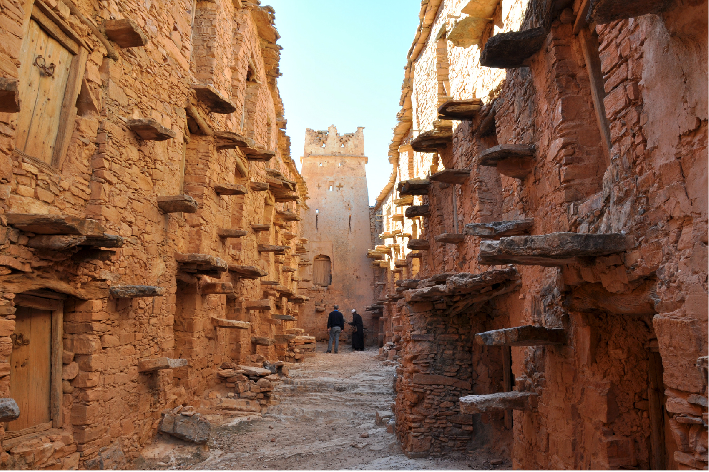
Fortified granaries, igoudar in Berber and plural agadir, were used to store crops, jewelry or important objects.
Their constructions date back several centuries. The cases that we used as a warehouse are generally 1m50 by 4m and can be closed by wooden doors more than 1000 years old still intact.
The villages were gathering to build these granaries.
In the region of Aït Baha, two fortified granaries:
- Imchguiguilne
- Inoumar
Tafraout
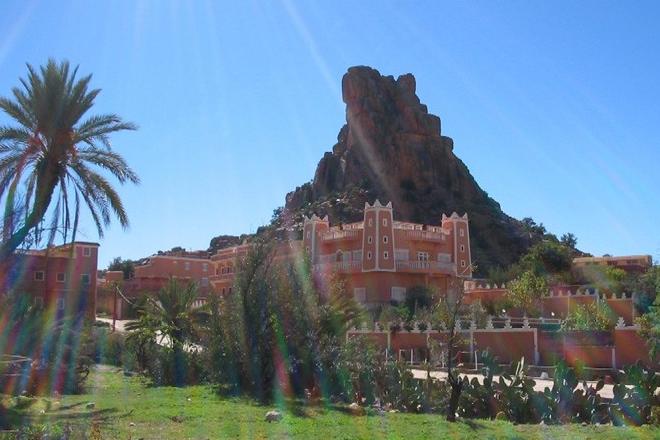
Tafraout is a small Berber town of about 5,000 inhabitants, located in the Anti-Atlas.
At the heart of the Ammeln valley, the city is surrounded by many pink granite rocks of different shapes.
A palm grove is home to many argan trees, olive and almond trees.
Every year, the almond festival (in winter) and the festival of lights "Tifawine" take place.
Marché Central d'Agadir

This is the local market, everyone is in this small indoor market to shop for fresh produce every morning in a very friendly atmosphere. Fish stalls, butchers, greengrocers, flower sellers, there is everything you need to simmer good food.
Mirleft

Mirleft is a village located south of Agadir, between the town of Tiznit and the village of Sidi Ifni, between the Atlantic Ocean and the mountain range of the Anti-Atlas.
This Amazigh village is touristy thanks to these many cliffs that fall into the ocean. Fishing and surfing are the main activities offered, among many others.
In 1935, a military fort was built on the heights of the city.
Jardin d'Olhao

Garden of Olhao is also called Garden of Portugal. It is pleasantly laid out and commemorates the signing of the agreement of cooperation and fraternity between the city of Agadir and the Portuguese city of Olhao.
Two pavilions, located at the corner of Avenue des FAR, are home to a moving exhibition of documents retracing the 1960 earthquake that ravaged the city. There are pictures of the missing city and others taken in the aftermath of the disaster, as well as photos of some buildings that resisted the disaster.
The district of the new Talborjt with its small white and cubic houses and its animation, is the only district of Agadir whose atmosphere is truly Moroccan.
La Kasbah d'Agadir
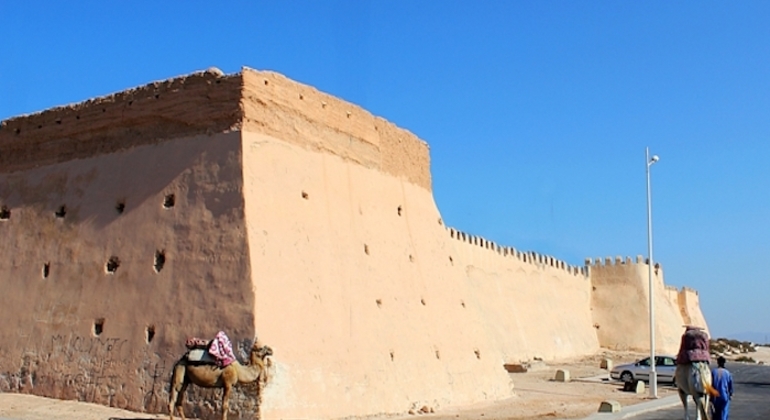
The Kasbah of Agadir is one of the most grandiose sites of the city. It is a fortress, overlooking the city and the beach at a height of 236 meters. This site was first erected in 1540 by a former Moroccan king before being rebuilt in 1752 to better protect the city from Portuguese and Spanish invaders. This fortress has contained the oldest district of Agadir, at the time composed of small streets and playful residents. This is where the old site of the city was before the earthquake of 1960. A majestic historic place to walk and admire the bay of Agadir.
Musée de la Mémoire

The Museum of Memory in Agadir tells the story of the earthquake that devastated the city on February 29, 1960, thanks to the photos and writings of witnesses to better understand this event.
Le Grand Rucher D'Inzerki
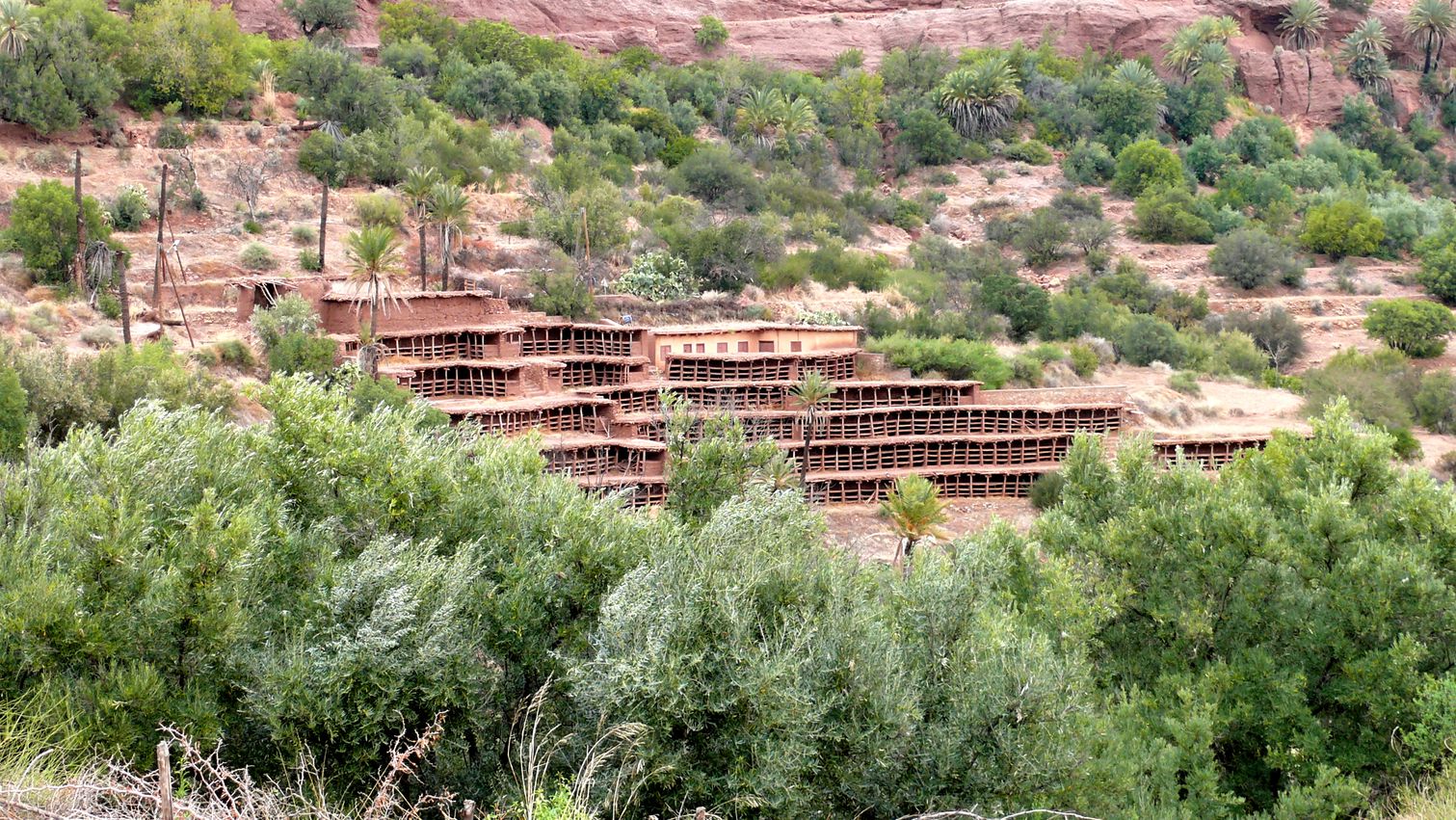
The Grand Apiary Inzerki is the largest and oldest apiary in the world!This collective apiary, more than two centuries old, is made up of many rammed earthen boxes where cylinders are placed to form hives. It is at altitude (980 meters), surrounded by many flowers and plants: argan trees, palm trees, thyme, lavender, etc.During its highest activity, the apiary had nearly 4,000 hives. Today, some douars share the apiary.To visit this apiary, contact the Association of Inzerki Apiary (to find on our guide).
Plage d'Agadir
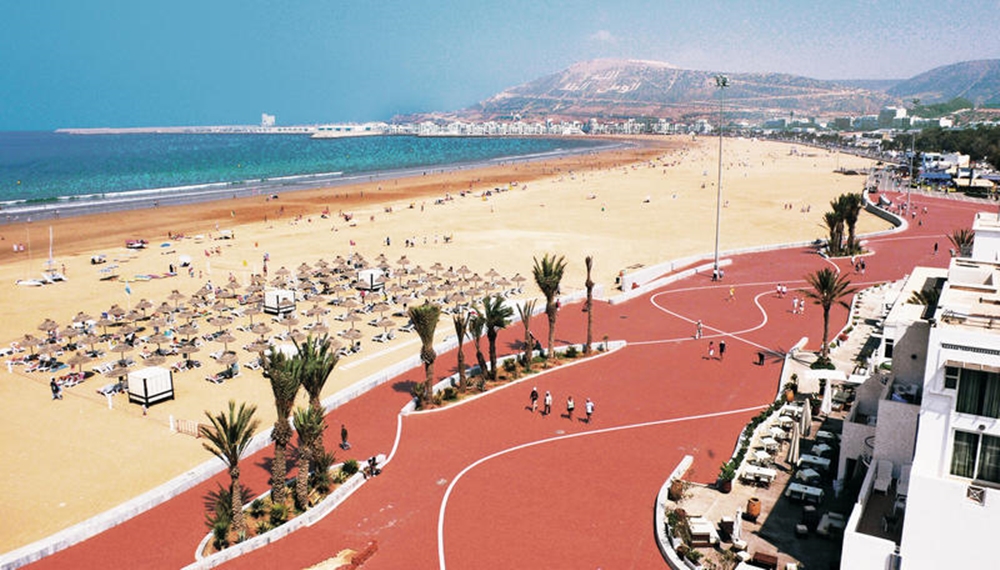
The waterfront area of Agadir consists of hotels and the city beach, which stretches for more than 10 kilometers. It also has many restaurants and cafés combining tradition and modernity. For those who love walks, the town has just completed a 5-kilometer walk-through project allowing for a total discovery of the magnificent seafront. A real embellishment and an added tourist attraction for the new city of Agadir.
Spot de surf la pointe d'Imssouane

Beware of sharp rocks, better go at high tide, point break, one of the longest straight of Africa. Spot for all levels.
Marina Agadir

The luxurious Agadir Marina is a splendid and friendly place with sea views. The boats are moored to pontoons previously leased to the city. The Marina also hosts shops, cafes and restaurants of standing to do some shopping before a stroll at sea or simply, rest in the sun and take some colors.
h
Horizef
more





0 Comments